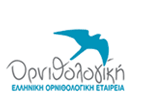20th Annual Symposium on Sea Turtle Biology and Conservation, Orlando, Florida, USA 29/2-4/3/2000
The coastline of the Evrotas Delta and the nearby beaches are the fourth largest nesting rookery in Greece for the Loggerhead sea turtle (Caretta caretta), hosting an average of 200 nests annually. The extensive sand dunes that once lay between the beach and the low-lying wetlands are now greatly reduced in area by agricultural conversion, and degraded by numerous damaging activities. Channelisation of the Evrotas river has also led to severe coastal erosion. Sand dunes are a protected habitat under the EU Habitats Directive, they also fulfil a vital role in maintaining the beaches and protecting the coastal zone. Under the LIFE-Nature project, ARCHELON, in co-operation with local authorities, carried out several projects aimed at the protection of these dunes and restoration of damaged and degraded areas.
Several different types of sand-trapping fences were built to determine effectiveness, then two larger areas were selected for pilot projects. Monitoring showed high rates of sand accumulation in some areas, up to 50cm over nine months. Once a good dune profile is achieved, transplanting of native Marram grass will restore the natural functioning of the dune system.
In the management plan prepared by ARCHELON and the Hellenic Ornithological Society, other sites along the nesting beaches are identified where dune restoration and protection works are necessary. Combined with proposals for the re-creation of other areas of coastal wetlands and the reformation of the river, the natural function of a coastal delta may be recovered, so protecting the nesting beaches.

